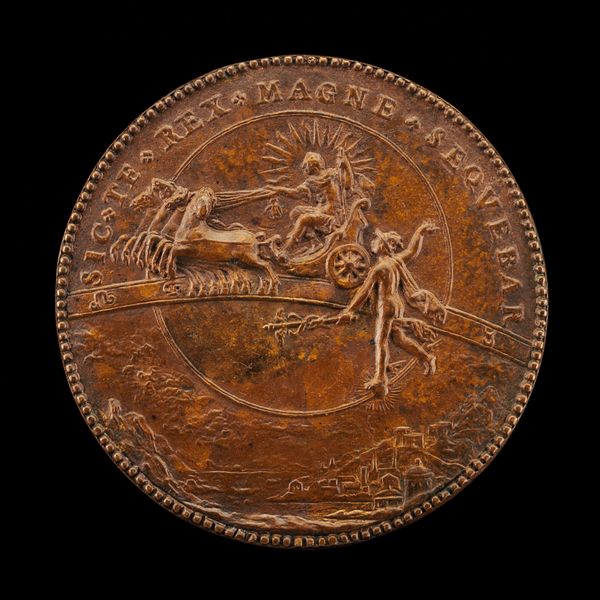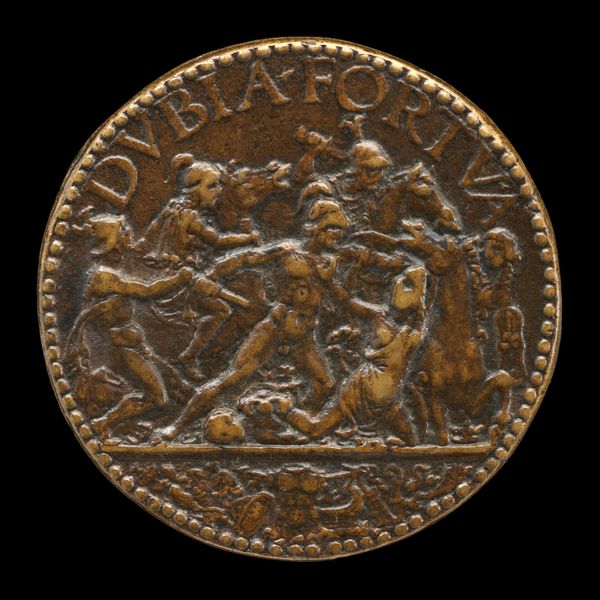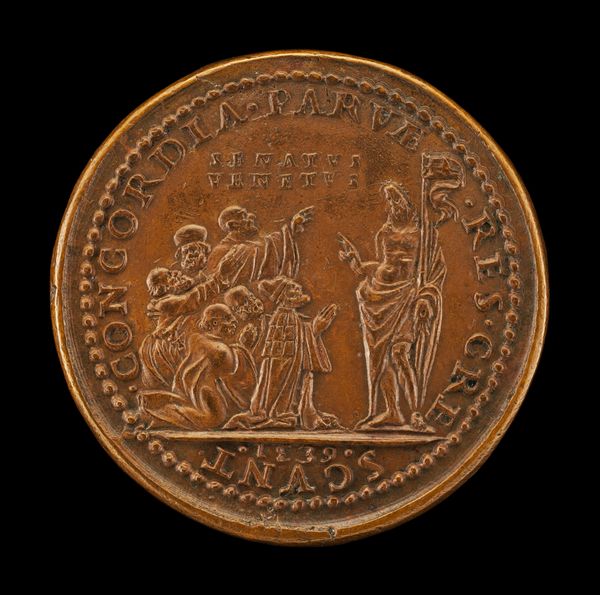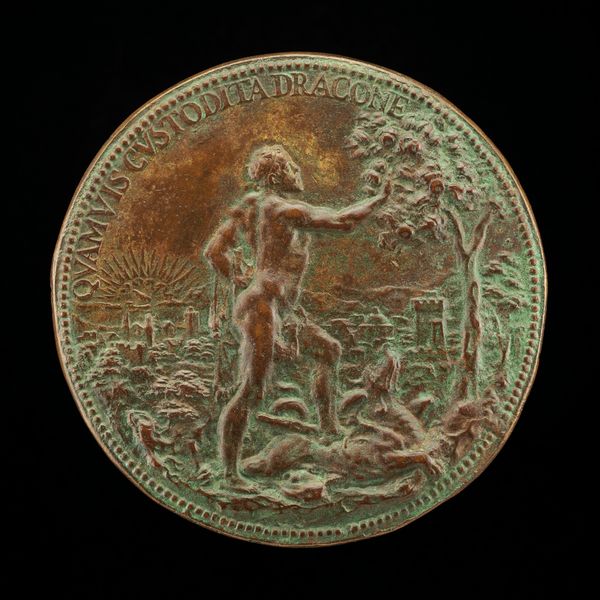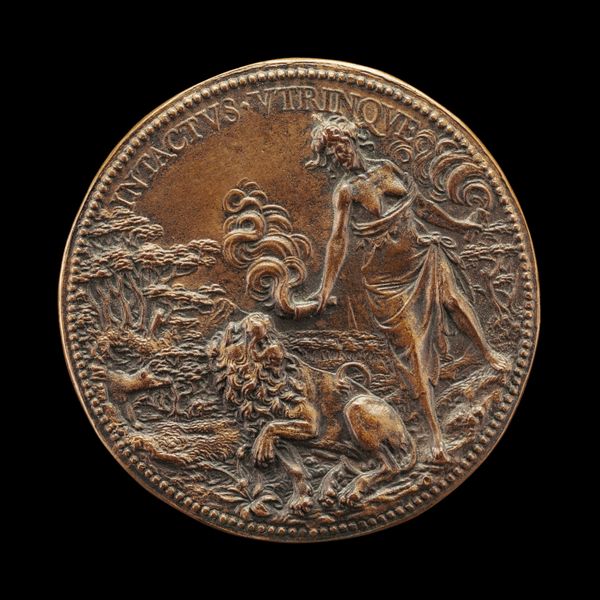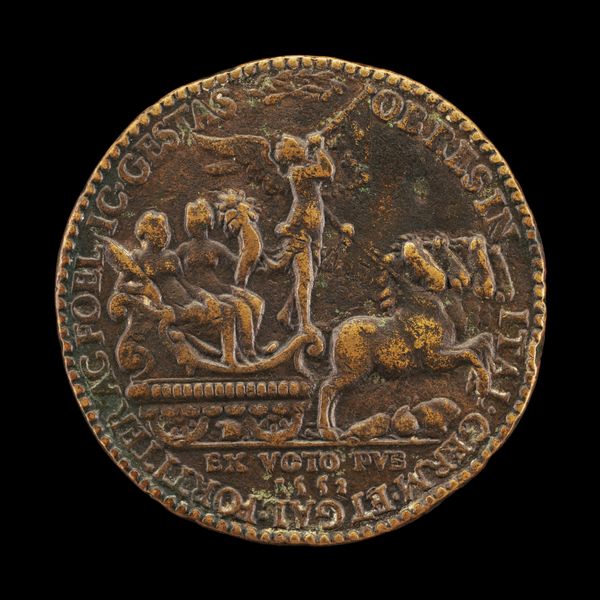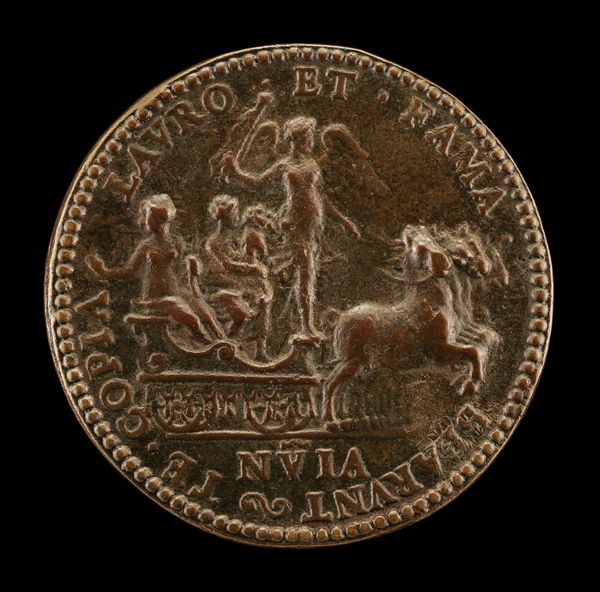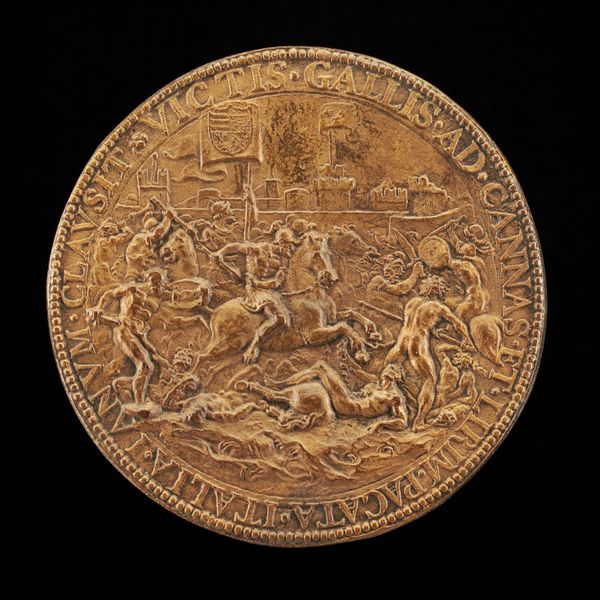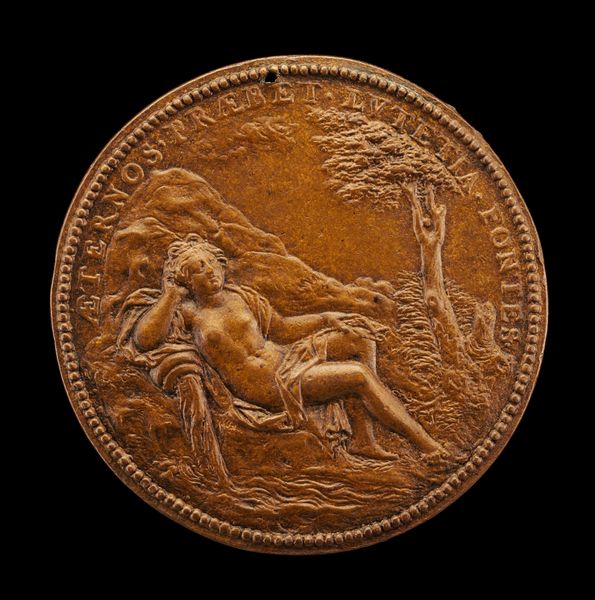![Conquest of Transylvania [reverse] by Annibale Fontana](/_next/image?url=https%3A%2F%2Fd2w8kbdekdi1gv.cloudfront.net%2FeyJidWNrZXQiOiAiYXJ0ZXJhLWltYWdlcy1idWNrZXQiLCAia2V5IjogImFydHdvcmtzL2YyMjQxMzUwLWE4NmQtNDkyZC1hNDJhLTFhZDEyMTRkMjQwYi9mMjI0MTM1MC1hODZkLTQ5MmQtYTQyYS0xYWQxMjE0ZDI0MGJfZnVsbC5qcGciLCAiZWRpdHMiOiB7InJlc2l6ZSI6IHsid2lkdGgiOiAxOTIwLCAiaGVpZ2h0IjogMTkyMCwgImZpdCI6ICJpbnNpZGUifX19&w=3840&q=75)
carving, relief, bronze, sculpture
#
medal
#
carving
#
allegory
#
stone
#
detailed texture
#
relief
#
bronze
#
figuration
#
11_renaissance
#
carved into stone
#
geometric
#
sculpture
#
carved
#
history-painting
Dimensions: overall (diameter): 4.49 cm (1 3/4 in.) gross weight: 28.15 gr (0.062 lb.) axis: 6:00
Copyright: National Gallery of Art: CC0 1.0
Curator: Here we have a bronze medal, "Conquest of Transylvania," created by Annibale Fontana around 1562. Editor: My initial impression is one of stark contrast. A strong, armed figure looms over a relaxed, almost vulnerable reclining figure. Is that supposed to be Transylvania herself? The material gives it a rough feeling, yet so many details. Curator: Indeed, that’s how Fontana depicts Transylvania. Considering the era, the bronze itself would have been quite valuable, likely commissioned by someone with considerable resources to commemorate a specific moment. We can almost feel the weight of political power embedded within it, and in this piece the artist emphasizes the detailed texture across the entirety of the surface of the material. Editor: I find that contrast of power and submission interesting, but also deeply embedded in the symbolic language of the time. Notice how the inscription reads “TRANSYLVANIA CAPTA”, signaling conquest and domination over that population, that region. Curator: And look at the sheer density of figures in the background. Almost like a mass being subjugated. Editor: Exactly! And the figure, perhaps representing the river Mariscus, is strategically placed at the bottom, underlining the geographic boundaries within this political narrative. The symbols point to a definitive and forceful takeover. Curator: I wonder about the labor involved, though. The precision of the carving suggests specialized skills. The piece could also be examined for understanding craft traditions, how the material constraints and technological opportunities shaped artistic creation, and circulation in society at that time. Editor: I hadn't considered it from a craft perspective, but that’s a very relevant angle. It’s striking to see how that scene of triumph uses such familiar visual cues to tell its story. Thanks for drawing that out, it helps reveal just how many cultural assumptions and power dynamics are captured in such a small format. Curator: And, for me, reflecting on the making and the value placed on that bronze gives a sense of historical and economical forces at work shaping not only how things were made but their significance in contemporary society. Editor: Indeed. I’m left thinking about how these historical narratives, so clearly rendered in symbolic language, continue to shape our perceptions of power and land to this day.
Comments
No comments
Be the first to comment and join the conversation on the ultimate creative platform.
